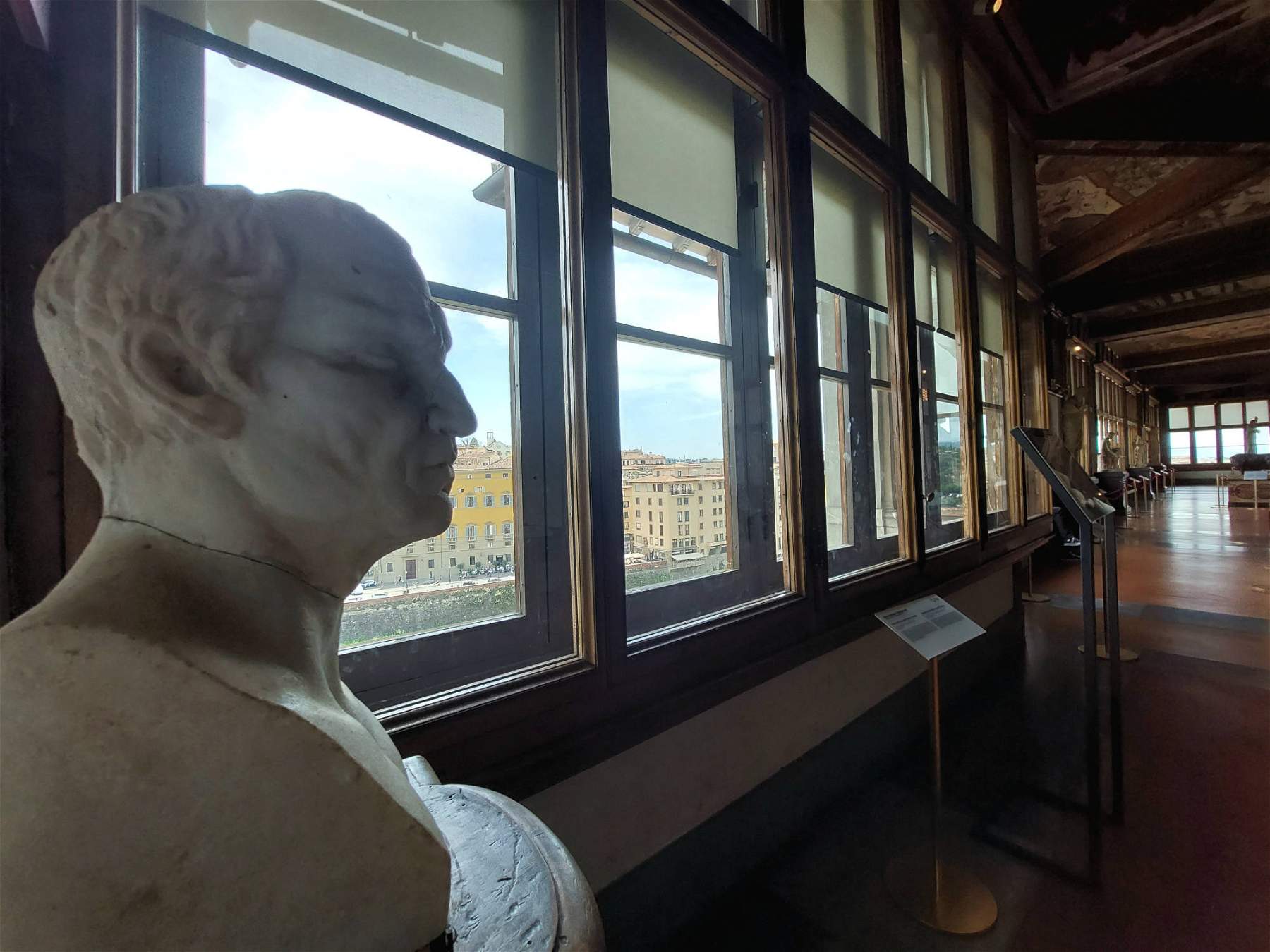A marble bust, dating from the second half of the first century B.C., of an important public figure is, the latest work to arrive to enrich the Uffizi Galleries’ collection of Roman-era portraits, among the largest collections of its kind in Europe. His name is unknown, but surely the man must have been an admirer of the most vital and innovative currents in portraiture of his time.
The frowning expression, the taut neck, the disheveled locks of hair, framing a perfect Greek-style oval: these are the features of the work that was delivered by the Ministry of Culture to the Uffizi, where it is now on display on the second floor of the Gallery of Statues and Paintings. The setting of the head is dynamic and powerful, the sculptural style creates strong areas of shadow on the surfaces, accentuating the dramatic effects of expression: these are elements inspired by Hellenistic portraits from Egypt and Syria. It is not unlikely that the person depicted was a wealthy merchant, accustomed to traveling through the eastern Mediterranean and therefore knowledgeable about Greek culture. The work, a relevant testimony to the turbulent years of Julius Caesar and Octavian, was up for sale; it was reported by Michele Bueno, archaeological officer of the Florentine Superintendency to the Ministry of Culture, which exercised its right of pre-emption by acquiring it for state property. An ancient treasure is thus returned to the enjoyment of all in the Florentine museum.
Meanwhile, the European Archaeology Days are returning from June 17 to 19: the Galleries, in addition to this acquisition, are participating, ’on air’ on their Facebook page, presenting a project curated by Novella Lapini and Silvia Barlacchi with advice from Laura Buccino, which is dedicated to the hairstyles of famous empresses: from Livia , wife of Augustus and model of tradition, to the Flavian princesses, symbol of the style of the new dynasty, through Faustina Major, wife of Antoninus Pius and aunt of Marcus Aurelius.
The initiative will therefore offer an opportunity to approach the ancient world in an unconventional way, following one of the most common practices to personal care, combing, considered in ancient Rome and, still today, a real means of communication. Hands and faces shown in the videos belong to the students of classes 3H and 3I of the Elsa Morante-Ginori Conti Institute of Higher Education(Istituto Nicolodi) in Florence; the journey is completed by an ironic debate in spoken Latin, with Novella Lapini and Alessandro Muscillo giving voice to the ancient busts of Ovid and Sappho, on the central role of hair in female beauty.
“We are celebrating these European Days of Archaeology in a ’classical’ way,” says Uffizi director Eike Schmidt, “by exhibiting an important work, which has only a few days since become public heritage and ’anti-classical,’ by dedicating some videos to the creation of hairstyles of the most famous Roman empresses. The research, conducted by high school children under the direction of Uffizi scholars, brings antiquity closer to the present day, inviting everyone to look with new and curious eyes at works that would otherwise be the preserve of insiders.”
All information at https://journees-archeologie.fr/fru-1872/c-
 |
| The Uffizi acquires a valuable marble bust from the second half of the 1st century B.C. |
Warning: the translation into English of the original Italian article was created using automatic tools. We undertake to review all articles, but we do not guarantee the total absence of inaccuracies in the translation due to the program. You can find the original by clicking on the ITA button. If you find any mistake,please contact us.